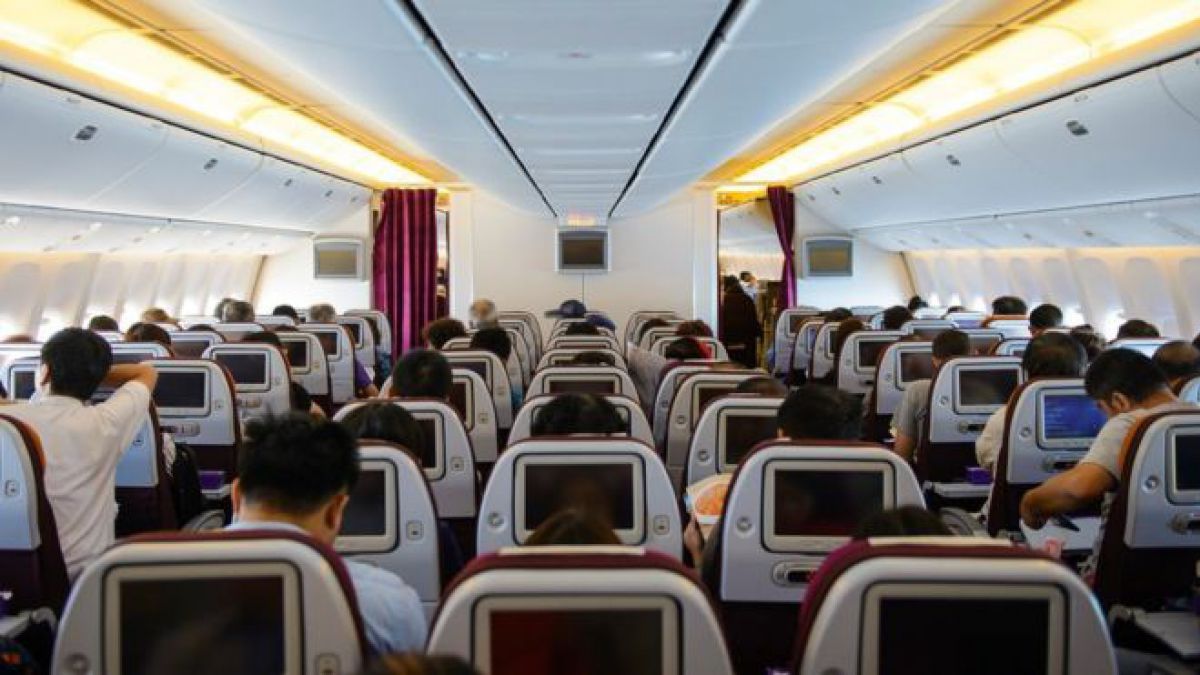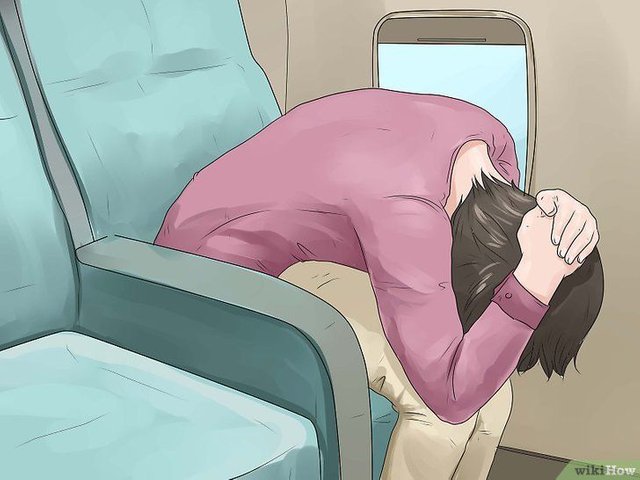4 Questions you have asked yourself when you ride a plane ✈️✈️✈️
Hello Steemians!
All those who usually travel by plane (either for pleasure or work) know exactly the routine that should be followed from the beginning of the flight to the landing, possibly when following the directions of the flight attendant, you have asked yourself is it possible that my phone could cause the plane's engines to shut down and crash? Well let's find out the answer, let's start.

Source
1- WHY SHUT DOWN THE PHONE DURING THE FLIGHT?
It is the most common and perhaps the most famous indication of all. Why does this happen? You will see, since January 1, 1914, that the first commercial flight in history began to this day, there has never been a single accident involving the use of a cell phone or a laptop inside the plane (of course, these are not existed in 1914) the reason why there were no accidents, it was not due precisely because everyone has obeyed this rule, according to some surveys 33% of passengers who do not have mobile phones or are in "airplane mode" while they were on the flight.
Some experts consider that we have been complying with this rule for more than 20 years only for prevention, and that there is really no possibility that a phone interferes with the flight, others say that the possibility, although low, is not worth risking and that effectively if it can affect the communication of the plane.
There have been cases of some pilots who report suspicions of interference by electronic devices inside an airplane, although it is unusual, reports indicate that this kind of interference can affect almost all the systems of an airplane, from communications and navigation to the flight controls (such as autopilot) and warning. This could not be corroborated however, the pilots said that when the passengers were instructed to turn off the electronic devices, the problem disappeared.
Conclusion:
It is better to be safe than sorry, these electronic devices have the potential to interfere at least a little in the concentration of the pilot, that is, we would be giving him more work and clearly these people need to avoid any interference, no matter how minimal.
2- WHY IS IT POSSIBLE TO RAISE THE WINDOWS OF THE AIRCRAFT WHEN IT IS DROPPING AND LANDING?
If you have traveled constantly by plane, you will know that part of the routine when taking off and landing is to raise the windows, the reason is purely for safety reasons, since these are the two most critical moments of all flights. In case of emergency having the windows raised facilitates the work of the rescue teams so they can see inside the aircraft. In addition, it does a double function, because it also allows both passengers and crew members to alert if they see something strange.
3- WHY SHOULD WE STRAIGHTEN THE SEATS OF THE AIRCRAFT WHEN IT IS DROPPING AND LANDING?
The reasons I found were many.
-It has been proven that in case of emergency, those passengers who go with the seat reclined backwards take much longer to react and place themselves in a safe way (evidently because they tend to go drowsy) and of course they make it difficult for the passenger who goes behind them to To be placed in this way, this is more common in economy class where seats usually only have a maximum distance of 80 cm between each seat.
-Inside an airplane, the seat and the belt are the only two elements that protect us. If we lie back and the device makes a strong shake our body will go forward, giving us a whiplash that can be very harmful to our neck and back.
-We must also bear in mind that if we recline, in the event of a jolt, the passenger sitting behind can impact against us.
-To facilitate the departure of passengers who are sitting behind (especially the window and the one in the center). With the seat reclined backwards it is more difficult to get out quickly if necessary.
-By having the seat reclined, we make it difficult for the passenger sitting behind us to be placed in the fetal position required by the safety protocol in case of emergency.

Source
Although this position seems that in case of emergency you would break your neck or back much easier, the truth is that it is proven that people who follow this protocol are more likely to be saved in the case of planes that have crashed, burned or fallen To the sea, one of the most famous cases was that of the Bolivian Erwin Tumiri of the accident that the Chapecoense plane had.
4- OXYGEN MASKS
We have heard it a thousand times in our plane trips: "in case of depressurization of the cabin, the compartments located above their seats will be opened and ..." Fortunately, this is something that happens very rarely.
According to Airbus, if a plane loses pressure at 40,000 feet, passengers have only 18 seconds of "useful consciousness" without supplemental oxygen. So, if you once see yourself in these circumstances, it is better not to waste your time with panicked cries.
At high altitudes, the air has very little pressure and oxygen levels are very low. therefore, airplanes have intelligent systems to maintain the pressure of the cabin at a level equivalent to an altitude of between 5,000 and 8,000 feet. Sitting on a plane is, in some way, like visiting Mexico City or Bogotá.
In case this system fails and depressurization occurs, we will have the possibility to use these masks, although it is a serious and potentially dangerous situation, it is best to put on the mask and relax while the pilot lowers the plane to a safe altitude (No, we are not crashing).
What do you think about it? I would love to read your opinion!
Tell me if you like me, I bother you or have some constructive criticism.
I invite you to follow me and work as a team, you can count on my support.
